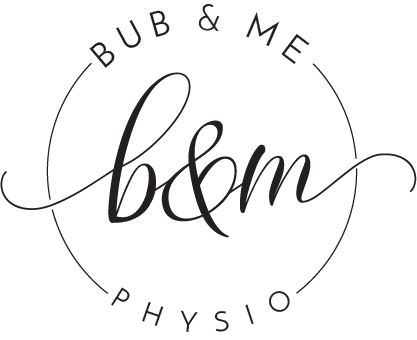Ask Us About Postnatal Exercise
Are you wondering how important it is to exercise after having a baby? Or when you can return to your gym class? Or perhaps the gym seems like it’s still veeerrry far off and you’re wondering what steps you need to take to get back there.
Let’s talk about that!
Q. Is exercise beneficial postnatally?
Yes, it sure is! The Australian and New Zealand College of Obstetrics and Gynaecology recommend that resuming exercise or incorporating new exercise routines after delivery is important in supporting lifelong healthy habits.
The benefits of exercise are huge and include:
Promoting better sleep
Boosting energy levels
Relieving stress
Promoting weight loss
Improving cardiovascular fitness
Re-strengthening your pelvic floor and abdominals
Reducing abdominal muscle separation
Reducing prolapse and incontinence
Avoidance of common new-mama aches and pains
Q. Do I need to have a women’s health consultation with a physiotherapist?
Yes! We highly recommend having a women’s health consultation at 6-weeks postpartum, however, if issues are arising earlier, we encourage you to make an appointment sooner. If you are in Canberra, you can book a women’s health Physio appointment here.
Your consultation will include a:
Pelvic floor and prolapse assessment
Bladder and bowel function screen
Assessment of abdominal muscle separation
A musculoskeletal assessment
A discussion about how to safely return to exercise
For more information read our blog on this topic
Q. Are there any exercises I can do soon after delivery?
When it's safe for you to start exercising again after your baby is born depends on your fitness and strength during pregnancy, your birth experience, the recovery of your pelvic floor and abdominal muscles, whether you have pelvic floor dysfunction or other musculoskeletal injuries. Plus, you need to consider your energy levels.
Regardless of how you birthed your baby, providing you don’t have a catheter in situ, you can start your pelvic floor exercises within hours of delivery! More on this here.
There are so many benefits to starting to strengthen your pelvic floor straight away, including:
Increased blood flow to the area
Reduced perineal swelling
Improvement of healing of your pelvic floor muscles and any tearing or episiotomy
Prevention of prolapse
Reduced bladder leakage
Improvements in your core strength and stability, the first step to return to exercise
You can also start gentle walking and mobility exercises. Listen to your body. Rest when you need to and don’t lift anything heavier than your baby.
And if you want more details then please read our blog ‘The steps to returning to exercise postnatally’.
Q. I feel so weak, especially my abs and back. How do I regain strength?
By 6-12 weeks post-delivery you can join a postnatal specific class such as a Pilates-based physio class. Physiotherapists with qualifications in women’s health understand that pregnancy places great strain on your body. What you do in your postpartum recovery can make a huge difference to your long term outcomes.
By following the advice and exercises in a postnatal program such as ours, you will rebuild your core and pelvic floor safely, take steps to reduce your abdominal separation and be able to return to the things you love sooner.
Q. When can I get back to the gym?
You can start gentle weights from 6-12 weeks, and if you prefer, you could do these exercises at the gym. This is the time to focus on postnatal-specific exercises and recovery and it will be many weeks before you should participate in a class. It may take you 12-18 months before you fully feel like yourself again in the gym. This timeframe will also look different depending on your prior fitness level, level of injury sustained during delivery (if any), and several other contributing factors.
Q. When can I start running?
A. The short answer is after about 12 weeks postnatal, at the absolute earliest. During high-impact activities such as running, there is a rise in intra-abdominal pressure. The pelvic floor muscles need to be able to counteract these pressures and contract in a timely and efficient manner. It important that these muscles are first adequately rehabilitated to provide the level of function required during running. If symptoms are identified after returning to running, then it is recommended that running is stopped, the symptoms are evaluated and the underlying cause(s) treated. Speak to your women’s health physiotherapist about when the right time is for you to start a graduated return to running.
We have so much more information on this topic in our blog ‘When can you start running after having a baby?’
Q. How do I know if I am progressing too quickly?
You should not have any vaginal heaviness or bladder/faecal leakage, pelvic or back pain, heaviness or dragging in the vagina or abdominal doming while exercising. If you experience any of those symptoms then the exercise you are doing is too difficult and you need to step it back. Rest more, modify the duration, frequency or intensity of the exercise you are doing and go and see your women’s health Physio!
Postnatally, the best thing you can do is participate in a Physio-designed postnatal exercise program.
We run face-to-face postnatal classes run by highly skilled Physios and our Strong Mama online postnatal program will help you rebuild your core after pregnancy and birth, guiding you, week-by-week, back to strength.
As always, please reach out if you have any questions.





